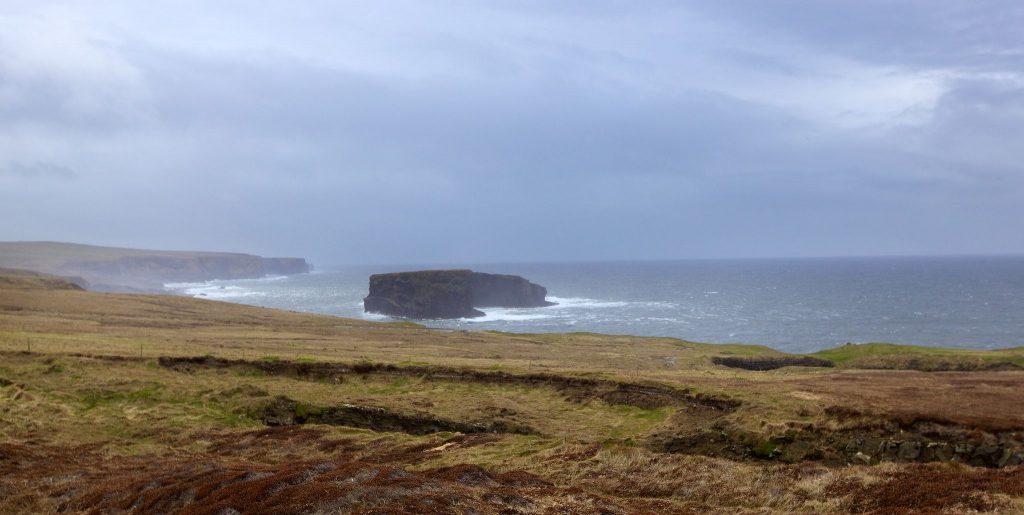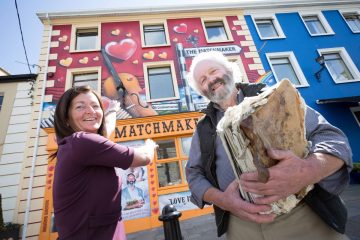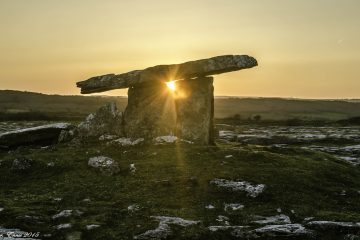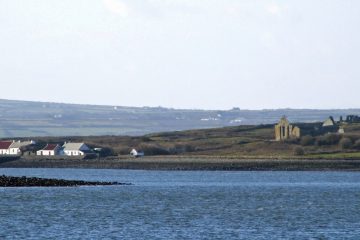The 6th century monastic settlement on Bishop’s Island gives the island its name. This unique sea stack was separated from the mainland over the last thousand years. Bishop’s Island is an example of a sea stack, which is a geological landform consisting of a steep, often vertical column of rock in the sea near the coast. Sometime in the last thousand years Bishop’s Island was connected to the mainland. Over the years, the force of the water has weakened cracks in the headland, causing them to collapse forming this free-standing seastack, 215 feet high. What makes this site unique is that there are the remains of a church, a clochaun (beehive hut) and the ruins of 3-4 other buildings on the sea stack. This monastic settlement is possible connected to St. Senan or his followers who founded a prominent monastery at Scattery on the opposite side of Loop Head in the 6th century. The monastic remains give the seastack its name, Bishop’s Island. The spectacular rugged coastline is dotted with a number of small islands and sea stacks. Bishop’s Island is an example of a sea stack, a geological landform consisting of a steep, often vertical column of rock in the sea near the coast. Sometime in the last thousand years Bishop’s Island was connected to the mainland. Over the years, the force of the water has weakened cracks in the headland, causing them to collapse forming this free-standing sea stack, measuring 180m x 90m and 40m high. What makes this site unique is that there are the remains of a church, a clochaun (beehive hut) and the ruins of 3-4 other buildings on the sea stack.

The remains of the church indicate that it was a dry stone church of Gallarus type. This building type takes its name from the famous Gallarus church located in Dingle, Co. Kerry and its design has been compared to that of an upturned boat because of its sloping side walls with stones cut on every side that fit perfectly together. The smoothly finished outside facings follow the slant of the wall. The Bishop’s Island church was small, with an area of only 9m², designed to only accommodate the small resident isolated community. The clochaun, or beehive hut was constructed in a similar style to the church. This monastic settlement is possible connected to St. Senan or his followers who founded a prominent monastery at Scattery on the opposite side of Loop Head in the 6th century.
There is a local legend relating to the name Bishop’s Island. A bishop, apparently attempting to escape the Irish famine, brought food to the island. He became trapped on the sea stack and starved to death. The sea stack was subsequently named Oilean an Easpoig Gortaigh, the island of the hungry bishop.




